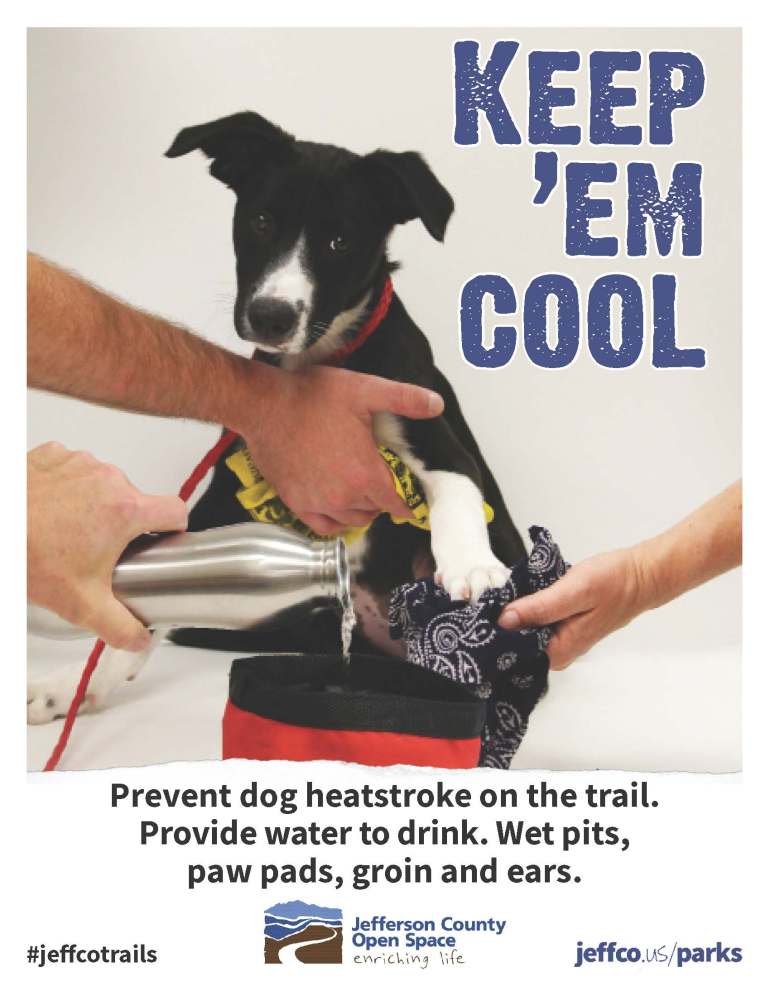JEFFERSON COUNTY, Colo. — As the heat of summertime sets in, the Jefferson County Open Space and Jefferson County Animal Control urge park visitors to prevent their dogs from suffering heat distress and heatstroke.
Last year, park rangers responded to 12 incidents of heat distress in dogs. They say that sadly, four dogs did not make it after suffering heatstroke.
That’s why they’re stepping up this year and placing prominent signs at trailheads and making videos to promote dog safety in the dog days of summer.

Here’s some tips from JeffCo officials on how to prevent and treat overheating in dogs:
1. Leave dogs at home when it’s hot, not in your car.
JeffCo officials say it’s probably just as hot on the trail as it is in your neighborhood. Leaving dogs in the car while in a park can be cited as animal cruelty and neglect and constitutes a violation of state statute.
2. Avoid hot trails and pavement.
If you can’t hold the back of your hand on the surface of the ground for longer than a count of five or walk barefoot, it’s too hot for dogs, according to Jefferson County officials.
3. Prevention is the best cure.
There are several ways to ensure that you prevent your dog from having a heatstroke:
- Offer water frequently.
- During the hottest part of the year, try to avoid park adventures between 10 a.m. and 4 p.m.
- Dip a bandanna in cool water and place on the few spots dogs release heat: paw pads, pits, insides of their eyes and their bellies.
4. Recognize the signs of heatstroke.
When a dog’s temperature gets too high, it may start to stumble, vomit or have diarrhea. Heatstroke starts with heat distress – early signs of that distress includ:
- Rapid panting
- Bright red tongue
- Increased heart rate
- Thick, sticky saliva
5. Treat heat distress immediately
Once heat distress is recognized, it must be treated as soon as possible. Seek shade. Give the dog cool water and place cool, wet cloths or bandannas on feet, stomach and around its head. Fan air around the dog and try to get veterinary attention right away. Don’t use COLD water or ice, since these could make the situation worse.
In short, the JeffCo Parks officials ask the public to keep their dogs cool and safe.